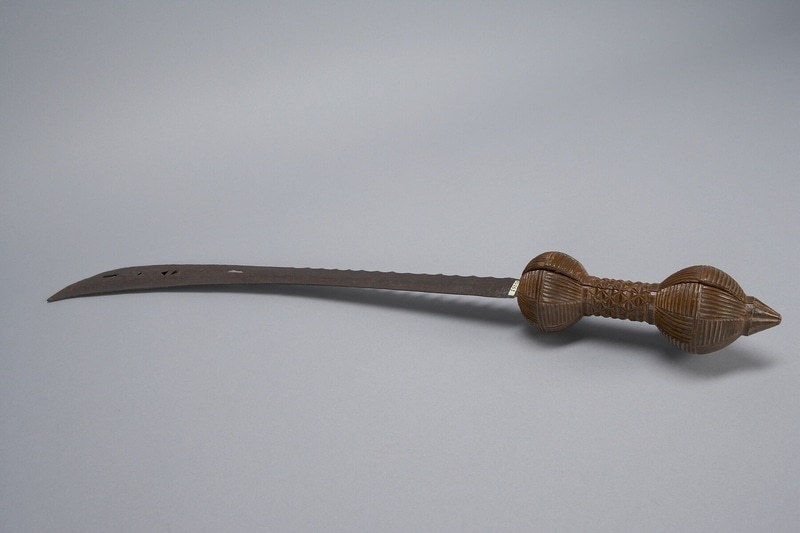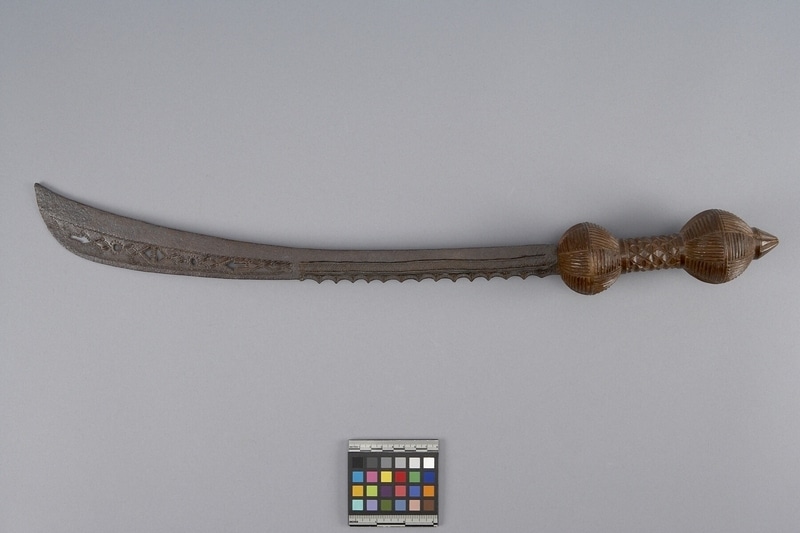Sword Item Number: K2.253 from the MOA: University of British Columbia


Description
Wood handle has a rounded cross-guard, a small grip, and a rounded pommel with a pointed tip at the end and is covered with incised line and triangle decorations. Formerly gilt incised line and wave-like curve patterns on one side of the iron blade. The blade curves upward slightly with the half near the handle having a pattern of wave-like curves inward and points outward. Blade is pierced along the pointed half with an arrow at each end pointing toward the middle where there is a circle and an outward pointing triangle at the centre each in between them.
History Of Use
This blade (akrafena, afena) would have been used in a variety of ritual ceremonies; use of them in Asante ceremony dates back to the 16th century. Examples of when it would have been used are when a chief was sworn into office, and during the funerary ritual of stool-blackening that recognized the death of a chief. These blades were important status symbols that a chief would have carried with them at all times to demonstrate their authority. A chief would often possess multiples blades of office for use in different rituals, or to give to their representatives as official emblems of allegiance. The name "akrafena" means "state sword", denoting its political value; "afena" means "soul sword", referring to its ritual significance. This kind of blade would have usually been adorned with intricate gold ornaments featuring anthropomorphic or zoomorphic designs, but these were rarely a permanent part of the sword.
Cultural Context
Symbol of authority; gilding symbolizes wealth.
Item History
- Made in Ghana
- Owned by British Museum before August 1960
- Received from British Museum (Exchanger) during August 1960
What
Who
- Culture
- Asante
- Previous Owner
- British Museum
- Received from
- British Museum (Exchanger)
Where
- Holding Institution
- MOA: University of British Columbia
- Made in
- Ghana
When
- Ownership Date
- before August 1960
- Acquisition Date
- during August 1960
Other
- Item Classes
- metalwork
- Condition
- fair
- Accession Number
- 0022/0023